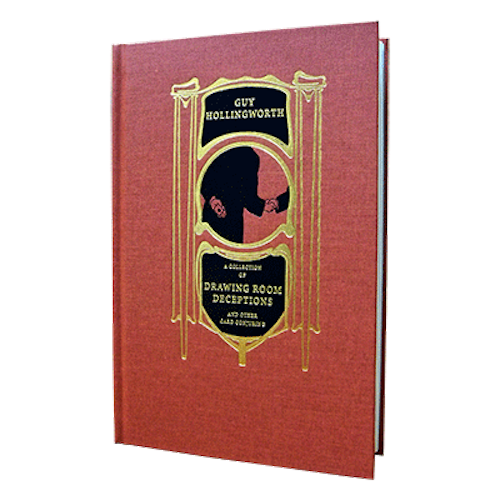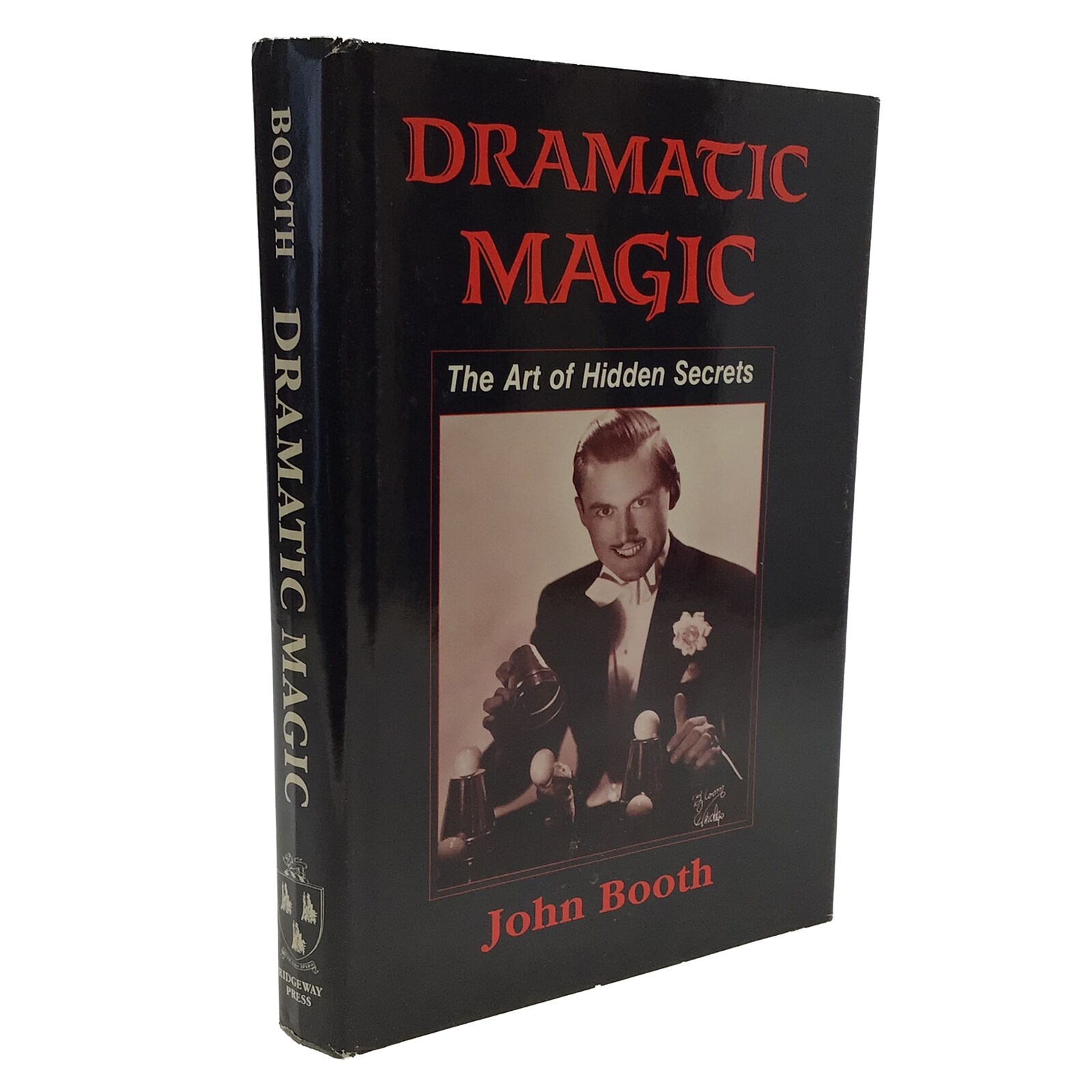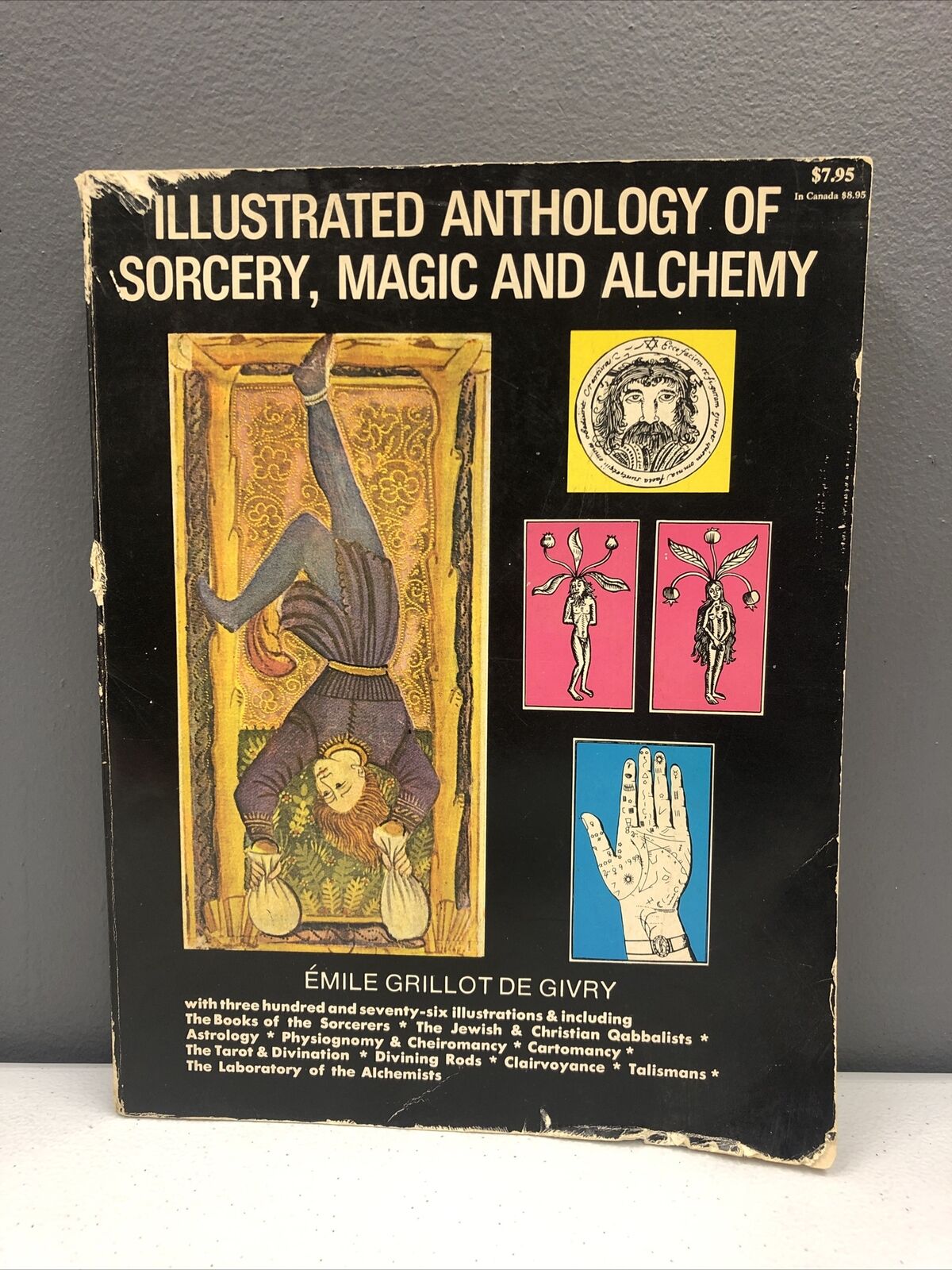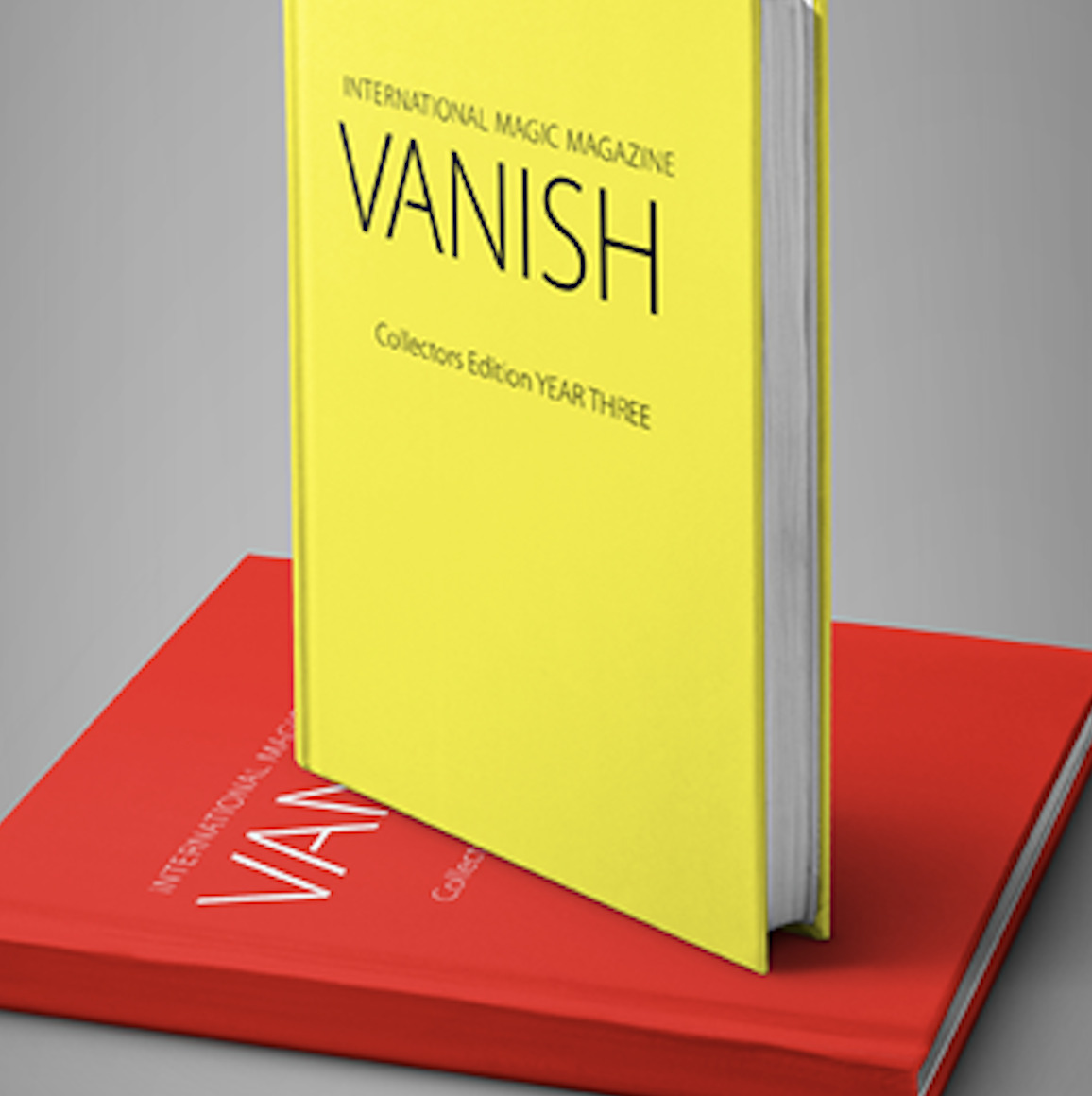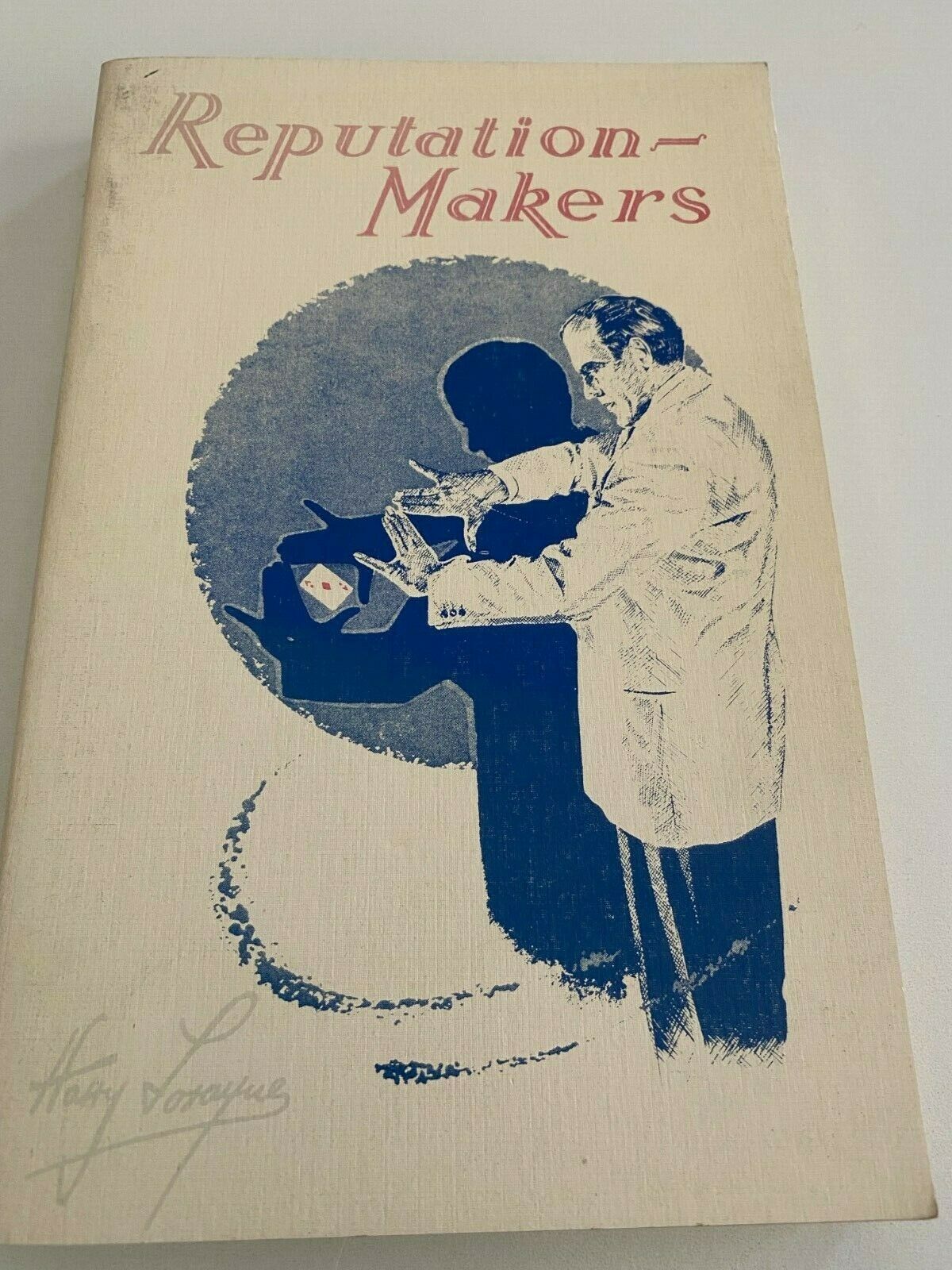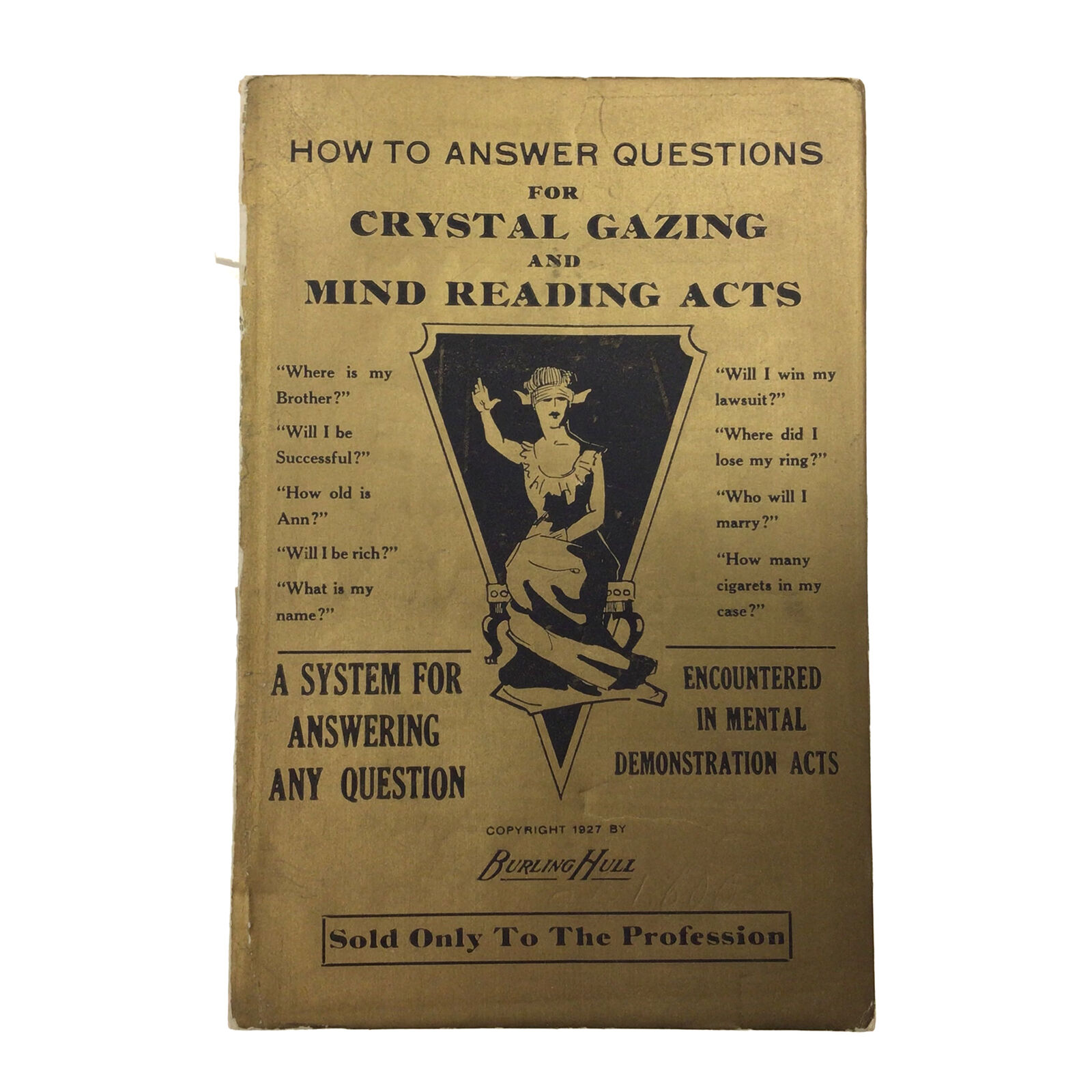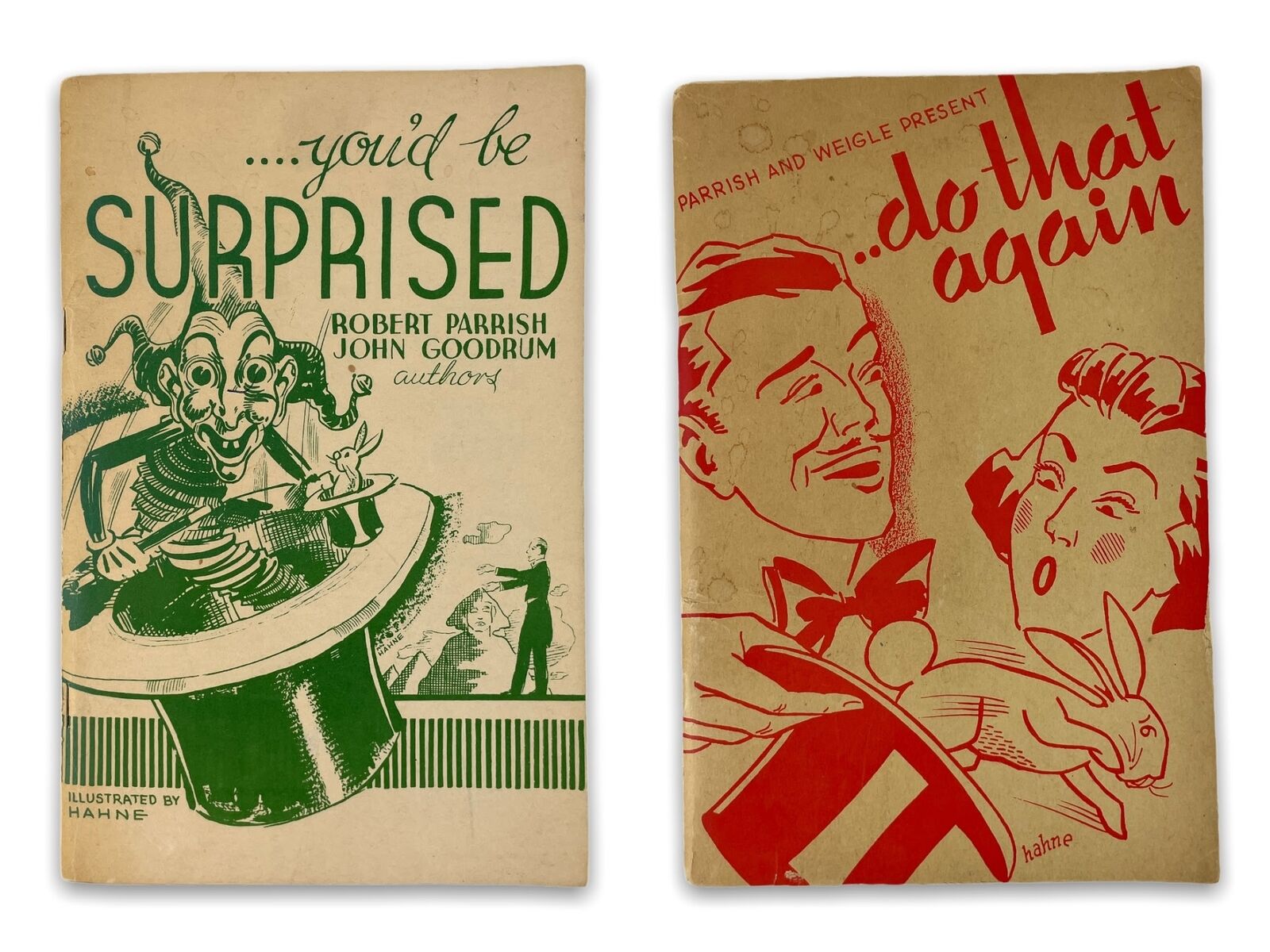-40%
Drawing Room Deceptions by Hollingworth - Book
$ 23.76
- Description
- Size Guide
Description
Drawing Room Deceptionsdid not become the publisher's fastest selling book ever just by chance. It was the direct result of a series of specific events. The first ingredient was a young English schoolboy willing to invest a full decade of his young life in the study and practice of close-up card magic. He was not satisfied to mimic the tricks of others so he created a repertoire that was totally original. Along the way, he developed a distinct performing style that was gentlemanly yet steeped in sophisticated humor. Following graduation from university, Guy spent a couple of years traveling around the world performing and lecturing for club meetings and convention audiences. Add to this, television appearances around the world such as The World's Greatest Magic in America. This exposure to thousands of magicians established Guy's reputation for possessing impeccable skill along with an arsenal of original material. And one miracle that stood out among all others was his not-to-be-believed, piece-by-piece card restoration, now known to the magic world at large as The Reformation. The final piece of the puzzle was putting all of this knowledge into a single book,
Drawing Room Deceptions
. The added fact that this entire book was written, illustrated and designed by young Mr. Hollingworth simply makes this story that much more amazing.
It is not an exaggeration to say that the magic world was desperate for the release of this book and when it finally did appear, the response was overwhelming. The presses had barely stopped spinning when it went to a second printing and it is now in its fifth edition.
Customers knew they would be thrilled with the sleights, theories and routines that fill the 320 pages of Drawing Room Deceptions but they were surprised and delighted with the book's physical appearance. The two-color stamping on the cover, a frontispiece featuring a formal portrait of the author, marbled end-sheets and distinctive typography and artwork give this book the appearance of a classic, nineteenth century magic textbook.
Pages
: 311 - 6" x 9" - Hardbound with 2-color stamping on cover and spine. Marbled endsheets.
Here is a peek inside Drawing Room Deceptions
EPILOGUE during which a method for tearing and restoring a card is discussed.
I have always had something of a love-hate relationship with magic; I certainly feel passionate about it much of the time, but I have a tremendous need of completely dissociating myself from it on regular occasions, or I tend to find it incredibly tedious. Magic incorporates elements which I love, and those which I cannot stand. Amongst the latter are the mass of marketed tricks and dealer halls at conventions; that is not through any snobbery or dislike for those who make their living out of producing and selling such items, but rather out of a complete lack of interest. I am aware that by ignoring this side of conjuring I am denying myself many fine effects that I will never otherwise come across, that could make valuable additions to my repertoire, but nonetheless, I have never understood the fascination with the dealer items. For some reason I vividly remember mentioning this incredulity to a colleague at an early convention that I attended, and being met with his philosophical answer that "they are all looking for the one trick in amongst all the others that will make them famous."
Despite being impressed at my relatively early age by the profundity of this statement of an older and wiser performer, I always had my doubts about the validity of what he had said; apart from feeling that it was unlikely that such a thought had ever crossed the minds of most of the people who were present, surely there could be no trick that could actually make your name, nor even distinguish you particularly from other fellows in the field. Whilst I still have my doubts that such a trick can be found on any dealer's table, or for that matter in any book or magazine, I have been truly amazed by the apparent interest that has been aroused by a trick which I came up with mainly to satisfy personal curiosity, rather than as any particular marketing ploy whereby I would become better known. In fact it was in my first year at university, where I had been fortunate enough to be allocated a room of my own, that the beginnings of such a trick came about.
As the work load was rather light to start off with, and since the campus was small and frequently devoid of evening entertainment, I initially quite often found myself in my room with time to kill. Having always intended to perform a torn and restored card of some description, I had recently learned and been very impressed by J.C. Wagner's method from his book Seven Secrets, and had set to work on possible ways of effecting a visible restoration of each piece. Although quite successful, this made the discrepancy of the final piece not being restored all the worse, and I decided that I would try to come up with a solution to this point. Progress was significantly hampered by the location of the only mirror in the room, which was above the sink, causing a multitude of dropped cards over the months to become slightly damp and unusable. Of the various methods that came out of these otherwise unproductive evenings, I had very little confidence in any, but nonetheless felt that from a theoretical point of view I had come some way towards solving the problem.
It was only after showing one version to a few friends that I became persuaded that it may actually be worth my performing it. After a while of doing so, I began to realize that it was not the method that was significantly wrong, but more the lack of practice, that I was now getting through performance. After a while, other conjurors expressed a certain interest in the method, and it was for my first lecture, which was at the Opus Isle of Man Convention, that I was persuaded to release the method (which to my amazement had seemingly fooled some people). It was released on video, being a simpler and quicker method for the novice such as myself to convey the workings than in textual form. I decided to release it as a strictly limited edition, not because of any desire to keep it exclusive, nor because I thought that it was a great trick, but simply as I cynically thought that since no-one would be interested in a complicated trick by someone whom they had never heard of, by releasing it as such, a few people might actually buy it, perceiving it to be more important than it was.
In fact, it seemed that interest was such that this ploy was unnecessary; I have frequently regretted making this pledge of the limited edition, as I have been met with many offers since to buy the tape. However, being a man of my word, I have not sold any since the end of that limited edition, nor will I ever do so; however, that was over three years ago, and I have decided that it is now time to discuss the method in another format, that being this book. It is my sincere hope that this will not cause offence to anyone who purchased the tape, as they have now had at least three years of exclusivity, should they wish to have made use of it, and it seems to me that if anyone else is truly desirous of learning the method (and I fear that they will have to be so in order to comprehend the following essay), they should be entitled to do so even if they did not happen to be on hand to buy the tape.
And so, by way of a conclusion to this book, there follows the complete description, with a number of possible variations, of what is arguably my favorite trick, and that which certainly has been kinder to me than any other, which has come to be called The Reformation.
